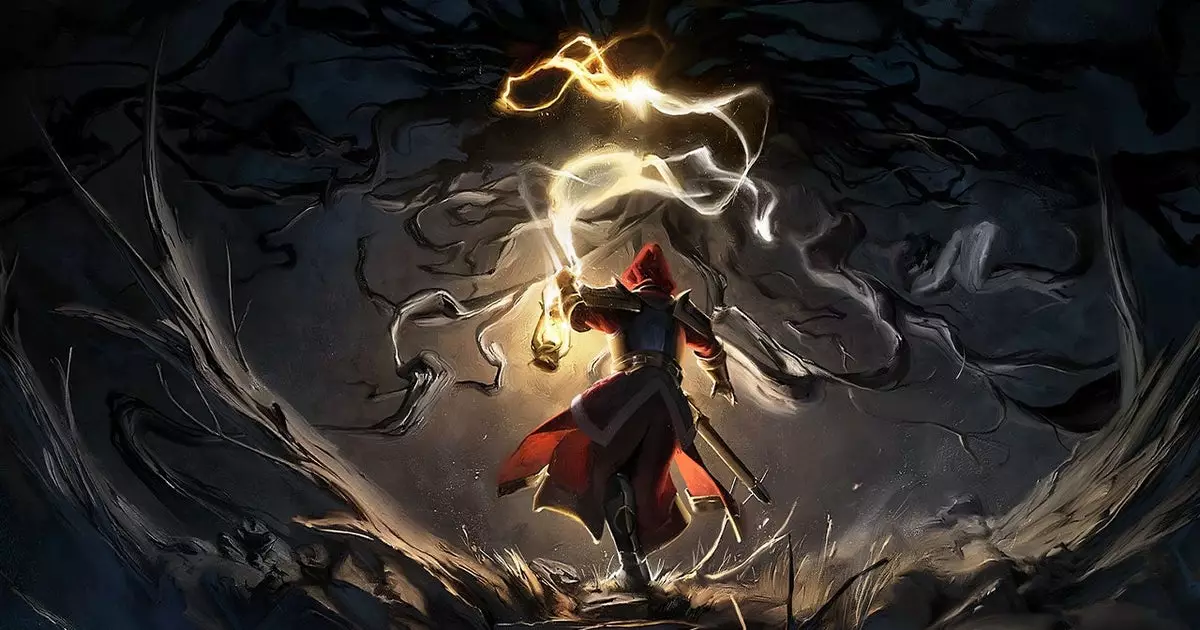When I first encountered *Mandragora: Whispers Of The Witch Tree*, skepticism clouded my judgment. At first glance, it seemed to succumb to the all-too-ordinary tropes that saturate the realm of dark fantasy side-scrollers. With visuals cut from a genre-standard cloth reminiscent of *Castlevania*, and intricate RPG mechanics that predictably entail classes and skill trees, the game appeared to be just another entry in a vast sea of look-alikes. Yet, the game’s connection to Brian Mitsoda, famed for his work on *Vampire: The Masquerade – Bloodlines*, pulled me in, albeit cautiously. But reader reviews and comments about seemingly rich gameplay hinted that perhaps I was underestimating this title. Following my initial impressions, I devoted more time to exploring its depths, and what a revelation it has been.
Worldbuilding and Storytelling at the Forefront
From my opening moments, it became clear that *Mandragora’s* heartbeat lies within its narrative. Set against a backdrop where the King Priest rules the decaying Crimson City with an iron fist, the game propels players into a haunting confrontation with moral ambiguity. The King Priest, echoing the sadistic characteristics of Judge Claude Frollo, prioritizes the persecution of witches, molding a world drenched in despair. As players step into the shoes of a designated inquisitor, tasked with the horrific act of mercy-killing a witch, the stage is meticulously set for an emotional ride fueled by a power as mysterious as it is dangerous. You don’t just play; you’re thrust into a grand tale where every decision is steeped in gravity and consequence.
The voice that whispers insidiously in your head runs parallel to this narrative adventure, a clever storytelling device that raises the stakes. Unlike many games that lean heavily on superficial systems, *Mandragora* presents itself as a narrative-first experience. This is further enriched by the NPC interactions that breathe life into the once-lifeless city. These conversations are not incidental; they serve as the lush icing on the cake of a mesmerizing story, enabling players to form emotional connections with characters who resonate with sorrow, fortitude, or even guilt.
Visuals that Ensnare and Engage
Visually, *Mandragora* does not shy away from ambitious artistry. The character portraits that some may dismiss as off-putting resonate deeply with me; they embody an almost haunting essence that complements the game’s somber story. Portraying characters that feel authentically animated—like unsettled oil paintings imbued with a restless spirit—these visuals serve a purpose beyond mere aesthetics. They are telling a story, casting shadows over what it means to inhabit a treacherous world replete with conflict. As I meandered through the irradiated corners of the Crimson City and its perilous outskirts, the environments unfolded like narrative landscapes, teeming with rich lore.
Combat Mechanics: A Tactile Dance of Evasion and Strategy
Turning our attention to the action mechanics, *Mandragora* distinguishes itself in its engaging, strategic combat. While the controls may initially feel a tad stiff, there’s an exhilarating push and pull to the battle sequences. Players wield their primary weapons against nightmarish foes while juggling auxiliary spells or defensive shields. Managing stamina is paramount, as combat emphasizes evasion and tactical positioning rather than mindless button mashing. This stylish gameplay echoes the rhythmic ballet found in classic titles while allowing for personal customization through abilities and passive traits. Each skirmish transforms into a rewarding encounter, inviting players to experiment and refine their unique monster-slaying styles.
Moreover, the levels designed in a semi-labyrinthian style evoke the intricate worlds of *Dark Souls*, rewarding curiosity and persistence. The hidden pathways, secret altars, and concealed entrances offer thrill and discovery, enveloping players in a sense of triumph each time they uncover a hidden treasure or boost their abilities. Every corner holds the promise of new facets to explore, creating an immersive experience that beckons players back time and again.
As I delve deeper into *Mandragora*, it is with bated breath that I look forward to the sprawling adventure ahead, knowing that this journey through darkness is only beginning. The richness of its narrative, the emotional depth of its character interactions, and a distinctly positive gaming experience weave together to form a tapestry that is both inviting and thrilling. This game exudes ambition, promising to marry depth with satisfaction in gameplay—a true gem that deserves a place in the pantheon of beloved dark fantasy classics.

